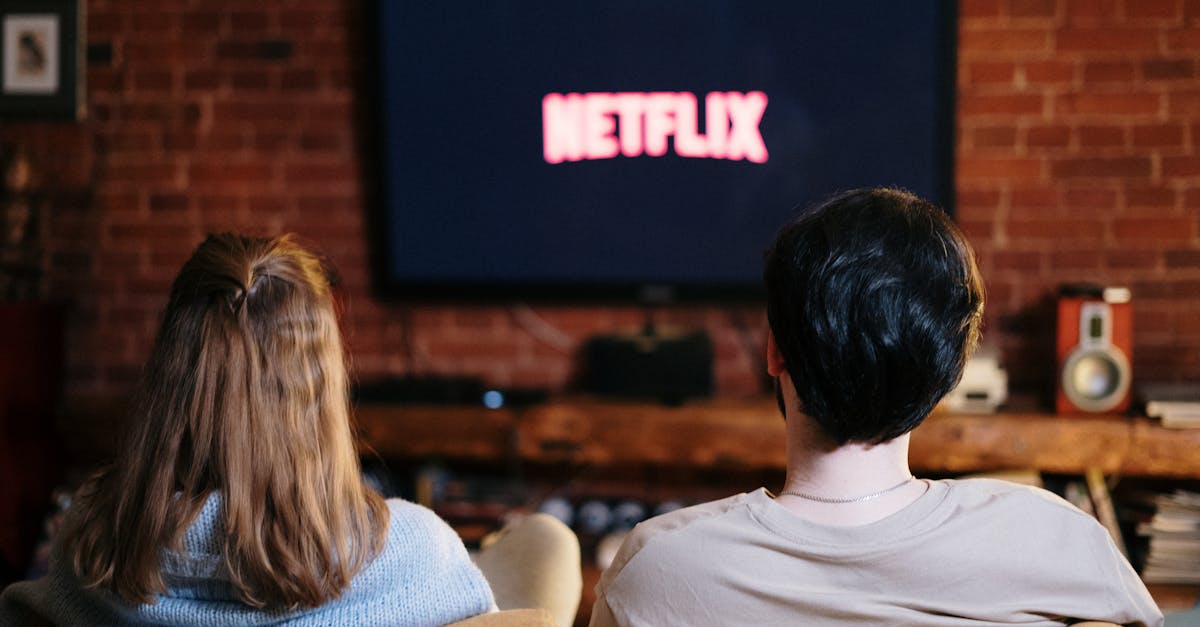Navigating Streaming Versus Movie Theatre Experience
The Evolution of Movie Watching
In recent years, entertainment consumption has undergone a seismic shift, with streaming platforms emerging as formidable contenders against traditional movie theatres. As audiences increasingly prioritize convenience and flexibility, the allure of home streaming grows stronger. Yet, the immersive, communal experience that theatres offer still holds a special place in the hearts of many. This cultural evolution raises compelling questions: Will streaming eventually replace the theatre experience entirely? Or do these two mediums serve fundamentally different purposes in entertainment?
To fully understand this dynamic, we must explore the advantages and limitations of both streaming services and theatres, examining factors such as convenience, sensory experience, economic impact, and technological advancements. Join us as we delve into the intricate facets of this ongoing battle—and potential coexistence—between streaming platforms and movie theatres.
Advertisement
The Comfort of Streaming Services
Streaming services have revolutionized entertainment by offering unparalleled convenience. With platforms like Netflix, Disney+, and Amazon Prime Video, viewers can access vast libraries of films and series at the touch of a button—no queues, no commute, and no rigid showtimes. This flexibility allows audiences to pause, rewind, or stop content at will, tailoring their viewing experience to their schedules.
Beyond convenience, streaming has also democratized content consumption. Families and friends separated by distance can use synchronized viewing features to watch movies together, fostering shared experiences despite physical separation. Additionally, streaming platforms have invested heavily in original productions, delivering high-quality films and series that rival traditional studio releases.
However, concerns linger about the dilution of cinematic value. Some argue that the ease of access diminishes the specialness of movie-watching, turning it into a passive, disposable activity rather than an event. Furthermore, the sheer volume of content can lead to decision fatigue, where viewers spend more time browsing than actually watching.

cottonbro studio/Pexels
Advertisement
The Unique Allure of Movie Theatres
Despite the rise of streaming, movie theatres continue to captivate audiences with an experience that cannot be replicated at home. The grandeur of a massive screen, the enveloping surround sound, and the collective energy of a live audience transform films into immersive spectacles. For cinephiles, theatres remain sacred spaces where the artistry of filmmaking is fully appreciated.
The social aspect of theatre-going is another irreplaceable factor. Whether it’s a date night, a friends’ outing, or a solo escape, the act of going to the movies is an event—an intentional break from daily routines. The anticipation of a premiere, the smell of popcorn, and the shared laughter or gasps of an audience amplify emotional engagement in ways that solitary streaming cannot match.
Yet, theatres face challenges. Rising ticket prices, expensive concessions, and the inconvenience of crowded screenings deter some moviegoers. Additionally, the dominance of blockbuster films in theatres often leaves little room for indie or niche productions, pushing diverse storytelling toward streaming platforms.
Advertisement
Content Availability and Accessibility
The variety and accessibility of content mark another pivotal difference. Streaming services boast extensive libraries available around the clock, catering to niche interests and lesser-known genres. Bonus features, behind-the-scenes content, or director's cuts find their home on these platforms. Meanwhile, theatres commonly showcase mainstream releases, providing a premier experience for blockbuster films. For audiences without access to theatres or those with mobility issues, streaming opens the door to new worlds. However, exclusive contracts may mean some films debut in theatres weeks or months before becoming available online.
One of streaming’s greatest strengths is its vast, on-demand library. From obscure indie films to classic cinema, streaming platforms cater to diverse tastes, often including bonus features like director’s commentaries and behind-the-scenes footage. For viewers with mobility challenges or those living in areas with limited theatre access, streaming is a lifeline to global entertainment.
On the other hand, theatres remain the exclusive home of first-run blockbusters, with major studios often enforcing months-long delays before films hit streaming. This exclusivity creates a sense of urgency and excitement around theatrical releases. However, the rise of hybrid releases (such as Warner Bros.’ 2021 same-day HBO Max and theatre premieres) has blurred these boundaries, forcing the industry to reconsider traditional distribution models.
Advertisement
The Economic Dynamics
Movie theatres and streaming platforms each play unique economic roles in the entertainment industry. Theatres may significantly benefit local economies by providing jobs and driving traffic to nearby businesses. They also offer filmmakers a substantial revenue channel through box office returns. Conversely, streaming services provide filmmakers a vast platform for distribution, often ensuring international reach for smaller productions. The debate around which medium is more lucrative is ongoing, but with concurrent releases becoming more common, the lines continue to blur. The success of both models fundamentally relies on creating compelling, diverse content that attracts audiences.
The economic impact of theatres versus streaming is complex. Theatres contribute significantly to local economies, providing jobs and driving foot traffic to surrounding businesses. Box office revenue remains a crucial income stream for filmmakers, especially for big-budget spectacles designed for the big screen.
Streaming, meanwhile, offers filmmakers a global platform without the constraints of physical distribution. Independent creators benefit from exposure they might not get in theatres, while studios enjoy steady subscription revenue rather than fluctuating box office returns. However, the oversaturation of content on streaming platforms means that many films struggle to stand out, leading to shorter cultural lifespans compared to theatrical hits.
Advertisement
Cultural Shifts and Audience Preferences
Cultural consumption continues to evolve, reflecting changing audience preferences and societal trends. Streaming services align with the growing demand for personalized, anytime entertainment. In contrast, movie theatres evoke nostalgia and a break from digital saturation. As platforms like Hulu adopt binge-worthy series, hour-long theatre experiences become more cinematic, focusing on carefully crafted storytelling. Young audiences, in particular, may opt for streaming due to its familiarity and reduced cost. Yet, theatre loyalists argue that some films are best consumed in traditional settings, where visual and auditory elements fully shine.
Modern audiences increasingly favor personalized, on-demand entertainment, making streaming the default choice for many. Younger generations, in particular, gravitate toward digital platforms due to affordability and familiarity. Binge-watching has replaced weekly TV appointments, and algorithm-driven recommendations shape viewing habits.
Yet, nostalgia and the desire for escapism sustain theatre attendance. In an era of digital overload, the cinema offers a rare opportunity to disconnect from distractions and fully immerse in storytelling. Some filmmakers, like Christopher Nolan and Denis Villeneuve, advocate passionately for the theatrical experience, arguing that certain films demand the scale and spectacle of a cinema.
Advertisement
Environmental Impact Considerations
In an age of increasing environmental awareness, the ecological footprint of both streaming and theatres merits consideration. Streaming platforms require substantial data centers with significant energy consumption, raising concerns about digital pollution. Movie theatres, although less reliant on digital infrastructure, contribute through energy-intensive operations and physical waste (tickets, snacks). Initiatives for greener operations, such as eco-friendly buildings or emission-efficient servers, have garnered support and attention. Consumers may weigh these factors alongside their preferences when choosing how to consume media.
Advertisement
Technological Advances and Future Trends
Technological advancement is poised to redefine both streaming services and movie theatres. Virtual reality and interactive storytelling pave the way for engaging experiences at home, bridging gaps between passive viewing and active participation. Meanwhile, theatres may leverage advanced projection tech or offer VR-enhanced screenings to entice audiences back. Future collaborations between tech companies and entertainment giants might optimize experiences, making both streaming and theatre options equally appealing and accessible. Regardless of evolution, storytelling remains central, with technological tools ensuring its preservation across platforms.
As environmental awareness grows, the ecological footprint of entertainment consumption comes under scrutiny. Streaming relies on energy-intensive data centers, contributing to digital carbon emissions. A single hour of streaming can generate significant CO₂, multiplied by millions of users worldwide.
Theatres, while less digitally dependent, consume substantial electricity and produce physical waste (tickets, packaging, concessions). However, some chains are adopting sustainable practices, such as solar-powered cinemas and biodegradable packaging, to reduce their impact.
Advertisement
The Pandemic Influence
The global pandemic accelerated shifts in entertainment consumption, making streaming more dominant for isolated viewers. With theatres shuttered temporarily, households revamped their setups for home streaming, intertwining habits further with digital consumption. Studios adapted by releasing blockbuster films directly online, demonstrating streaming's capacity to sustain the industry amid disruption. In contrast, post-pandemic theatregoers returned, eager for human interaction and exclusive releases. The pandemic illustrated how both media adapted under unprecedented circumstances, emphasizing each medium's adaptability and resilience.
Both streaming and theatres are evolving with cutting-edge technology. Streaming platforms are experimenting with interactive storytelling (e.g., Netflix’s Black Mirror: Bandersnatch) and virtual reality cinema, offering immersive at-home experiences.
Meanwhile, theatres are enhancing their appeal with 4DX screenings (motion seats, wind, and scent effects), laser projection, and even VR-enhanced auditoriums. The future may see hybrid models where films premiere simultaneously in theatres and on VR platforms, catering to all preferences.
The COVID-19 pandemic accelerated streaming’s dominance, with theatres closed and studios releasing major films digitally. Households upgraded home entertainment systems, and platforms like Disney+ saw record growth. Yet, post-pandemic, audiences flocked back to theatres, craving human connection and shared experiences. The pandemic proved that while streaming is indispensable, the theatrical experience is resilient.
Advertisement
Concluding Thoughts
The debate between streaming vs. movie theatres reflects deeper transformations in media consumption patterns. Both platforms thrive through adaptation, catering to modern lifestyles while preserving the essence of storytelling. Streaming services offer unmatched convenience and a vast array of content, heralding a new era of digital entertainment. Meanwhile, theatres protect the magic of communal viewing and sensory immersion, reminding us of cinema's irreplaceable essence. Ultimately, both mediums can coexist, serving diverse purposes and shaping a holistic entertainment landscape that captures the imagination of audiences worldwide.
Rather than a winner-takes-all battle, the future likely holds a symbiotic relationship between streaming and theatres. Streaming excels in accessibility and convenience, while theatres offer irreplaceable sensory and social experiences. As technology advances and consumer habits evolve, both mediums will adapt, ensuring that storytelling—whether on a smartphone or an IMAX screen—remains a vibrant, dynamic art form.
In the end, the choice between streaming and theatres isn’t about superiority—it’s about preference. And in an era of endless entertainment options, having both is the real victory for audiences worldwide.
Advertisement








